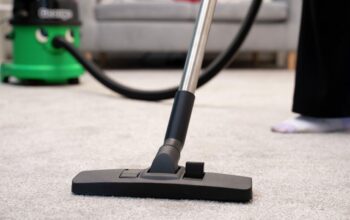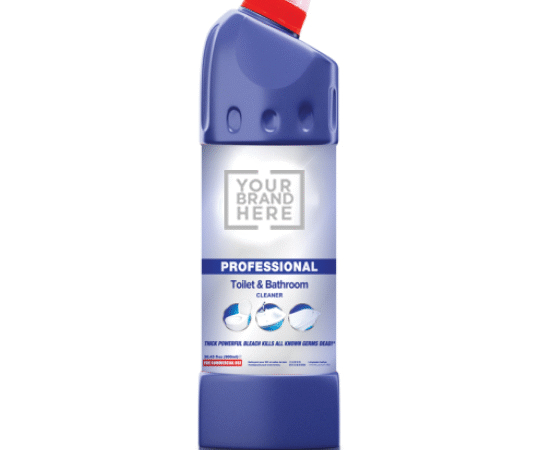Tired of mouldy bathrooms? Bathroom radiators like heated towel rails combat dampness by warming spaces and drying linens quickly. Explore benefits, installation tips, and how they keep your sanctuary spotless in this insightful guide.
Imagine stepping out of a steamy shower only to be greeted by foggy mirrors, dripping walls, and that unmistakable musty smell signalling the onset of mould. For many homeowners, bathrooms are ground zero for dampness issues, turning what should be a sanctuary into a breeding ground for unhealthy spores. But here’s a game-changer: installing a bathroom radiator can transform this scenario. These clever heating solutions not only warm your space but also actively combat moisture, helping you maintain a dry, healthy environment. In this article, we’ll explore how they work, their benefits, and practical tips to get the most out of them.
Understanding Mould and Dampness in Bathrooms
Bathrooms are inherently humid spaces. Hot showers and baths release steam that condenses on cooler surfaces like walls, ceilings, and tiles. If this moisture isn’t managed, it leads to dampness, which fosters mould growth. Mould thrives in warm, wet conditions, and black spots on grout or peeling paint are common signs. According to experts, untreated condensation can cause structural damage and health issues like allergies or respiratory problems.
Common Causes of Bathroom Dampness
- Poor Ventilation: Without adequate airflow, steam lingers, increasing humidity levels.
- Cold Surfaces: Unheated walls and floors encourage condensation, much like dew on grass.
- Wet Towels and Linens: Hanging damp items creates ongoing moisture sources, promoting mildew.
- Leaky Fixtures: Even minor drips add to the problem over time.
Preventing these issues starts with controlling humidity. While exhaust fans help, they often aren’t enough in colder climates or poorly insulated homes.
How Bathroom Radiators Combat Mould and Dampness
At their core, bathroom radiators—often in the form of heated towel rails—work by raising the temperature of the air and surfaces in your bathroom. Warmer air holds more moisture, reducing the relative humidity and preventing condensation from forming on walls and windows. This simple principle is key to keeping mold at bay. Unlike traditional heaters that might just blow hot air, radiators provide consistent, radiant heat that dries out damp areas effectively.
The Science Behind It
When you heat bathroom walls and floors, the temperature difference between the air and surfaces decreases, minimising condensation. Electric models, for instance, can run continuously at low levels to maintain dryness without spiking energy bills. Heated towel rails take it further by drying towels quickly, evaporating moisture that would otherwise linger and contribute to humidity.
Types of Bathroom Radiators
- Electric Towel Rails: Plug-in or hardwired, these are ideal for quick installation and offer timers for energy efficiency.
- Hydronic Systems: Connected to your central heating, they provide even warmth but require plumbing expertise.
- Dual-Fuel Options: Combine electric and hydronic for year-round use, perfect for seasonal climates.
Incorporating a bathroom radiator midway through your renovation or upgrade can make all the difference, especially in compact spaces where space-saving designs shine.
Benefits of Installing a Bathroom Radiator
Beyond mould prevention, these radiators offer a host of advantages that enhance your daily routine. They’re not just functional; they add a touch of luxury to your bathroom while promoting hygiene and efficiency.
Key Benefits
- Rapid Towel Drying: Say goodbye to soggy towels. Heated rails dry them in hours, reducing bacteria growth by up to 90% and eliminating that sour smell.
- Improved Air Quality: By lowering humidity, they help prevent allergens and respiratory irritants associated with mould.
- Energy Savings: Modern models are efficient, using less power than space heaters while providing targeted warmth.
- Space Optimisation: Wall-mounted designs free up floor space, making them perfect for small bathrooms.
- Aesthetic Appeal: Available in chrome, white, or matte finishes, they blend seamlessly with modern decor.
- Healthier Environment: Quick drying inhibits mildew on towels and reduces overall dampness, leading to fewer cleaning sessions.
For example, in a family bathroom with frequent use, an electric towel rail can keep multiple towels dry overnight, cutting down on laundry loads and extending linen lifespan.
Choosing the Right Bathroom Radiator
Selecting the best option depends on your bathroom’s size, usage, and existing setup. Start by measuring your space—aim for a radiator that covers at least 70% of the wall height for optimal heat distribution.
Factors to Consider
- Size and Output: Calculate BTUs needed based on room volume; a 500W model suits most standard bathrooms.
- Material and Durability: Stainless steel resists corrosion in humid environments.
- Features: Look for timers, thermostats, and IP ratings for water resistance.
- Budget: Entry-level electric rails start at £50, while premium hydronic ones can exceed £200.
Popular brands like Stelrad offer towel rail radiators designed specifically for bathrooms, emphasising reliability and style. Read reviews to ensure the model heats evenly without overheating.
Installation and Maintenance Tips
For optimal performance and mould prevention, proper installation is key. Position your radiator strategically near the shower or bath to intercept rising steam, but ensure it’s safely out of range of direct water splashes. Electric models typically offer simple plug-and-play installation, while hydronic versions require professional plumbing connections.
To maximise effectiveness against dampness, combine your radiator with an extractor fan system—run the fan during showers to remove excess moisture, then let the radiator maintain a dry, warm environment afterwards. This dual approach creates a robust defence against humidity and mould growth throughout your bathroom.
Maintenance for Longevity
- Clean Regularly: Wipe down rails with a soft cloth to prevent dust buildup, which can reduce efficiency.
- Check for Leaks: Inspect connections annually to avoid water damage.
- Energy-Saving Hacks: Use a timer to heat only when needed, like 30 minutes post-shower.
- Winter Boost: In colder months, run at low settings overnight to keep walls warm and condensation-free.
One real-world example: A homeowner in a damp-prone UK flat installed a dual-fuel towel rail and noticed mould spots vanishing within weeks, thanks to consistent low-level heating.
In wrapping up
Remember that a bathroom radiator is more than a heater—it’s a proactive shield against mould and dampness. By warming your space, drying towels efficiently, and reducing humidity, you create a healthier, more comfortable bathroom. Whether you’re battling existing issues or preventing future ones, investing in one pays off in cleanliness and peace of mind. Follow the tips shared here, and you’ll enjoy a mould-free oasis year-round.











